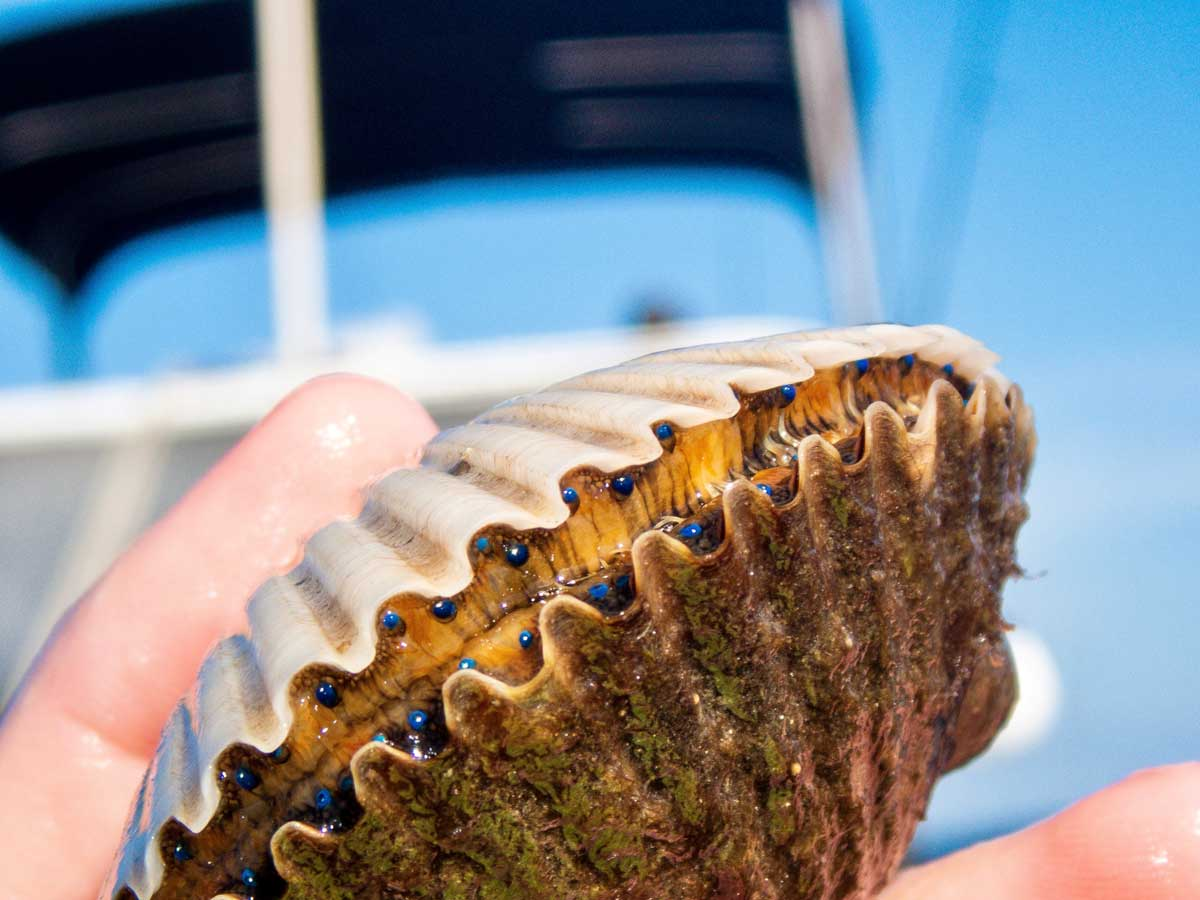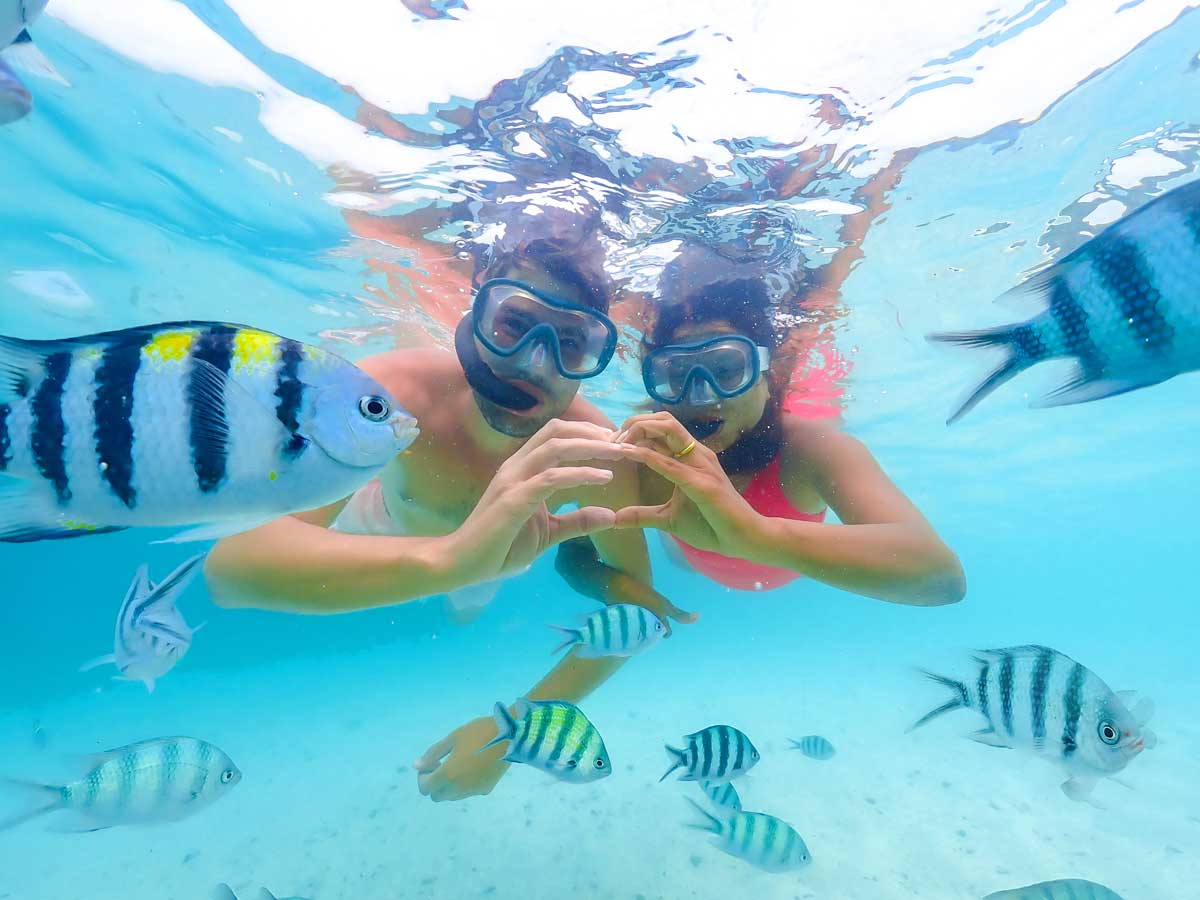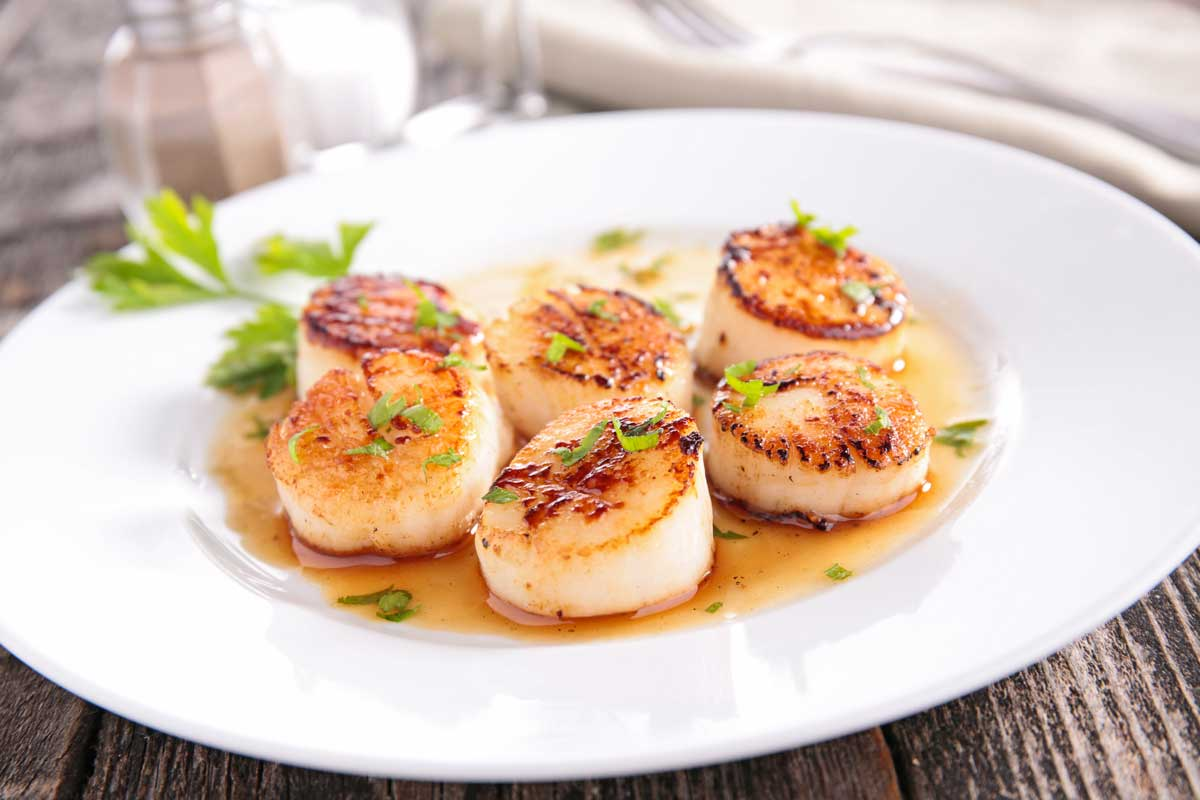By Carrie | Updated: May 05, 2025
Learn everything you need to know about scalloping in Cape San Blas—season dates, gear, scallop limits, cleaning tips, snorkeling how-tos, and where to stay for the ultimate late-summer adventure.
Ever found yourself in Cape San Blas feeling bored and desiring an adventure? Or perhaps you simply have an insatiable hunger for scallops and you love cooking them yourself!
Cape San Blas is an amazing place to be for anyone that loves the thrill of catching scallops, or enjoys cooking them, or loves the taste, or enjoys every step of the process, from catching to munching.
If you've never gone scalloping before and you're curious about how to prepare for scalloping, the things you'll need, and how to go about it, you'll find all the information you need below. Here's all you need to know about scalloping in Cape San Blas:
Contents
1. Why Visit Cape San Blas for Scallop Season
2. When is Scallop Season in Cape San Blas
3. Where to go for Scalloping in Cape San Blas
9. How to Clean Scallop Shells
11. Do I Need A License To Scallop In Florida?
12. Can You Eat A Raw Scallop?
13. Are Scallops Healthy For You?
14. You'll Want to Come Back for More
Why Visit Cape San Blas for Scallop Season
Cape San Blas is a prime destination for scallop season, offering a unique and exciting experience for seafood enthusiasts and adventure seekers alike. The crystal-clear waters of St. Joseph Bay provide the perfect habitat for an abundance of succulent bay scallops, ready to be harvested by eager visitors.
One of the standout features of scalloping in Cape San Blas is the opportunity to combine multiple activities into one unforgettable trip. Imagine snorkeling through the warm, inviting waters, searching for the elusive scallops hiding among the seagrass beds. You'll also have the chance to explore the stunning underwater world and spot various marine life while you're at it.
But the adventure doesn't end there. Cape San Blas offers a range of activities to complement your scalloping experience. You can explore the pristine beaches, go fishing, or even attend the annual Florida Scallop, Music & Arts Festival in nearby Port St. Joe. The area's laid-back atmosphere and friendly locals will make you feel right at home, ensuring a memorable visit filled with delicious seafood, fun activities, and lasting memories.

When is Scallop Season in Cape San Blas
Scallop season in Cape San Blas usually runs around mid-August - mid-September. It's the perfect time to grab your snorkel gear and head out into the warm Gulf waters to hunt for these delicious bivalves. You'll find the best scalloping in 4-8 feet of water, often near seagrass bed. After a fun day of scalloping, cook up your catch for a fresh seafood feast. Late summer is an ideal time to visit Cape San Blas and enjoy this exciting underwater adventure.
Scallop season also overlaps with Cape San Blas's slower tourist window, just before the area gears up for fall fishing tournaments and art festivals in nearby Port St. Joe. It's a great time to visit if you prefer fewer crowds and calm, sunny mornings on the bay.
Where to go for Scalloping in Cape San Blas
The best place to find scallops in Cape San Blas is in clear waters 4 to 8 feet deep, often near seagrass beds. These shallow depths make it easy for snorkelers of all skill levels to spot and harvest scallops. Renting a boat can be a great way to reach these prime scalloping spots and provide a place to store your catch.
Some of the most productive areas are around the edges of seagrass beds. As you glide through the warm Gulf waters, keep your eyes peeled not only for scallops but also schools of colorful fish, sand dollars, and starfish. Cape San Blas is one of the few places where you can wade out from shore and start finding scallops to scoop up.
Popular launch spots include Salinas Park Bayside and the boat ramp at Eagle Harbor inside T.H. Stone Memorial St. Joseph Peninsula State Park. Both offer easy access to the seagrass beds where scallops thrive. If you're wading, the shallow waters just north of the park's bayside beaches are ideal.
For the best scalloping experience, head to the waters between the Mexico Beach Canal in Bay County and the westernmost point of St. Vincent Island in Franklin County. This region, which includes Cape San Blas, is open for recreational scallop harvesting during the season from August 16th to September 24th, 2024.
Things You'll Need
To go scalloping in Cape San Blas, you'll need a few key items. First and foremost, make sure you have a mask, snorkel, and fins. They're essential for spotting those elusive scallops hiding in the seagrass beds.
Don't forget a mesh bag to store your catch while you're underwater. Scallops can pinch, so a mesh bag will protect your hands. Once you've got your scallops, put them on ice in a cooler to keep them fresh until you're ready to clean and cook them.
Speaking of cleaning, you'll need a knife or spoon to pry open the shells and remove the meat. A dive flag is also crucial to alert other boaters that you're in the water. Safety first!
Sunscreen, food, and drinks are must-haves to keep you protected and energized during your scalloping adventure. And if you don't have your own boat, consider renting one to reach those prime scalloping spots in 4-8 feet of water.
One tip I learned the hard way was to bring extra drinking water and a waterproof dry bag. I didn't, and by the time we got back to shore, everything was damp, including my snacks and phone.
Local outfitters like Scallop Cove offer gear rentals and quick tutorials if you're scalloping for the first time. I chatted with one of the staff there, who said the best time to head out is mid-morning when the water's clearest.
Scalloping Limits
During the scalloping season, each person is allowed to harvest 2 gallons of whole bay scallops in the shell or 1 pint of scallop meat per day. If you're heading out on a boat, the maximum limit per vessel is 10 gallons of whole bay scallops in the shell or 1/2 gallon of scallop meat (which equals 4 pints).
How to Find Scallops
Finding scallops in Cape San Blas is like an underwater treasure hunt! The best place to search is in clear waters 4-8 feet deep that have lush seagrass beds. Scallops love to hide in the grass or along the edges where the seagrass meets sandy patches.
To spot them, you'll want to don a mask, snorkel, and fins. Slowly drift over the grass flats and scan for scallops nestled in the blades or peeking out at the boundaries. They may try to make a getaway when they see you coming, but don't worry - they're not fast swimmers.
A mesh bag comes in handy for storing your catch as you snorkel. Aim to gather scallops on the outskirts of the grass beds first before venturing into thicker sections.
While you can hunt for scallops by wading out from shore, it's often easier to reach the prime scalloping areas by boat. Many local shops rent boats and equipment to help you get fully outfitted for a successful scalloping excursion.
As you search, keep an eye out for other exciting marine life like colorful fish, starfish, sand dollars, and seahorses that also inhabit the seagrass meadows. Immersing yourself in this vibrant underwater world is all part of the thrill of scalloping in Cape San Blas!

How to Snorkel
Snorkeling is an exciting and accessible way to explore the underwater world. To get started, you'll need a well-fitting mask, a snorkel, and a pair of fins. Begin by laying flat on your stomach in the water with your face submerged. Gently bite down on the snorkel's mouthpiece and seal your lips around it, breathing normally through the tube.
As you swim, be mindful of your surroundings and avoid interfering with delicate marine life like coral reefs. If water enters your snorkel, simply exhale forcefully through your mouth to clear it out. It's important to stay relaxed and maintain slow, steady breathing. Avoid hyperventilating, as this can lead to passing out in the water.
For the best experience, choose a sunny day with calm, shallow waters. Consider getting a prescription-adjusted mask if you have poor eyesight. Remember to wear plenty of sunscreen, as the water's reflective qualities can amplify the sun's rays. Most importantly, never snorkel alone and be aware of potential hazards like riptides, large waves, and dangerous marine life.
If it's your first time snorkeling, try practicing in waist-deep water first. I did this when I was still a beginner, and it helped calm my nerves before swimming into deeper areas where the scallops were. Also, if you're not a strong swimmer, wearing a flotation belt is a smart option. They're available at most rental shops around Cape San Blas.
How To Clean A Scallop
Cleaning scallops is a simple process that requires just a few tools. First, rinse the scallops under cold water to remove any sand or debris. Then, use a sharp knife to carefully open the shell, starting at the hinge and sliding the blade along the inside of the top shell until it pops open.
Once the shell is open, remove the dark material and membrane surrounding the white scallop meat. You can do this by gently scraping it away with the knife or a spoon. Be careful not to damage the meat in the process.
Next, remove the white scallop meat from the shell and discard the shell. Rinse the scallop meat under cold water again to ensure it's clean.
Some key tips:
-
Only keep scallops that are at least 2 inches in size
-
Avoid damaging the seagrass beds while collecting scallops
-
Place scallops on ice immediately after harvesting to keep them fresh
And that's it! Your scallops are now ready to be cooked and enjoyed. Scallops can be pan-seared, grilled, baked or used in a variety of dishes like pasta, salads, and more.

How to Clean Scallop Shells
Cleaning scallop shells is easy. First, use a spoon or knife to remove the white adductor muscle, discarding the remaining soft tissue. Rinse the empty shells thoroughly under running water to remove any debris or sand. For a deeper clean, soak the shells in a mixture of warm water and mild dish soap for about 30 minutes.
Gently scrub away any remaining grime using an old toothbrush. Rinse the shells again and allow them to air dry completely. Once cleaned and dried, you can display your scallop shells or use them in crafts and decor projects.
How to Cook Scallops
When you're ready to cook, pat the scallops dry using paper towels. Heat a tablespoon of butter or oil in a skillet over medium-high heat until sizzling. Place the scallops in the hot pan, making sure they aren't touching each other. Sear them for about 1-2 minutes on each side until they develop a golden-brown crust. Be careful not to overcook, as scallops can quickly become tough and rubbery.
Seasoning Ideas:
-
Sprinkle the scallops with salt, pepper, and a squeeze of lemon juice for a simple, classic preparation.
-
Brush them with a mixture of melted butter, garlic, and fresh herbs like parsley or thyme before searing.
-
Toss the cooked scallops in a light cream sauce flavored with white wine, shallots, and a touch of Dijon mustard.
Serve your seared scallops immediately while they're still hot. They pair wonderfully with pasta, risotto, or a fresh salad (visit this link to see more scallop recipes). Enjoy the sweet, delicate flavor of your hard-earned catch!
Do I Need A License To Scallop In Florida?
Yes, you need a Florida saltwater fishing license to harvest bay scallops in Cape San Blas, unless you're exempt or have a no-cost shoreline fishing license and are wading from shore to collect scallops. This means your feet can't leave the bottom to swim, snorkel, or scuba dive, and you can't use a boat to reach or return from your harvesting spot. You can purchase a saltwater fishing license online at Go Outdoors Florida or find a nearby location that sells them using their "locate an agent" tool.
Can You Eat A Raw Scallop?
Yes, you can eat raw scallops! In fact, many people consider them a delicacy when consumed fresh out of the shell. Raw scallops have a sweet, delicate flavor and a slightly chewy texture. However, it's crucial to ensure the scallops are fresh and have been properly handled to minimize the risk of foodborne illness. If you're unsure about the freshness or sourcing of the scallops, it's safer to cook them thoroughly before eating. When enjoying raw scallops, pair them with a simple squeeze of lemon juice or a light vinaigrette to enhance their natural flavor without overpowering it.
Are Scallops Healthy For You?
Scallops are a nutritional powerhouse, packed with protein, omega-3 fatty acids, and essential vitamins and minerals. These delectable morsels promote heart and brain health while remaining low in calories and fat. A single serving provides more than your daily requirement of vitamin B12, supporting cognitive function and red blood cell production.
Scallops also contain magnesium, which helps relax blood vessels and improve circulation. As part of a balanced diet, these succulent shellfish offer numerous health benefits without the high mercury levels found in some other seafood. Enjoy scallops guilt-free, knowing you're nourishing your body with every delicious bite.
You'll Want to Come Back for More
Regretfully, scalloping season only runs for about a month, so you need to get ready and begin as soon as possible so you can scallop to your heart's content within the official limits, of course.
Once the season is over, you'll have to wait till next year to go again, and this helps in building up the anticipation for the next season. You'll certainly want to return next year once you experience scalloping in Cape San Blas.
I've made scalloping almost a yearly tradition. We rent the same house near the bay every August, spend the mornings scalloping, and the evenings cooking together.
If your budget allows, you could even visit other locations in Florida whose scallop seasons start earlier, begin there, and end your season in Cape San Blas.
And while you're in Cape San Blas, you'll need a nice place to rest your head and relax. Pristine Properties have a selection of awesome vacation rentals to suit anyone. Want a small single-room rental? It's available. Want a large 7-bedroom home, you can have that too.
At Pristine Properties Vacation Rentals, we provide our guests with everything they'll need for a comfortable stay. Air conditioning, hot tubs,and private pools are just some of the luxury amenities we offer. Stay with us and enjoy the best vacation rentals Cape San Blas has to offer!
Planning more coastal adventures beyond Florida? When you're ready to trade the Gulf for the Atlantic, Carolina Beach Realty offers top-notch vacation rentals in Carolina Beach and Kure Beach.


